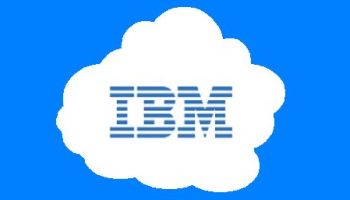

IBM has announced a new hybrid cloud solution based in part on technology the company got from its 2010 acquisition of Cast Iron.
IBM’s new hybrid cloud helps clients reduce the time it takes to connect, manage and secure public and private clouds. With new integration and management capabilities, organisations of all sizes will be able to gain greater visibility, control and the ability to automate their assets and computing environments, regardless of where they reside, IBM officials said
The new offering makes it easier for users to integrate and manage all of their on- and off-premise resources, and will allow a task that once took several months to be done in a few days.
“As a user of IBM WebSphere Cast Iron, we have been able to not only easily integrate our on-premise and cloud-based applications, but also provide live feeds of order data changes to our sales reps on any device, including mobile phones, tablets and laptops,” Randy Berger, IT manager for process and application development at Siemens, said in a statement. “Expanding on the Cast Iron platform will help IBM provide even better access and management for hybrid clouds.”
IBM officials said more and more organisations are looking to leverage the scale and flexibility of public cloud, but are concerned about losing control of resources outside their walls. This is causing organisations to embrace a hybrid cloud model, where they can more easily manage some resources in-house, while also using other applications externally as a service, IBM said.
According to industry analysts such as the 451 Group, 39 percent of cloud users report that the hybrid cloud is currently part of their strategy, with this number expected to grow to 61 percent in the near future. This is the result of both private and public cloud users evolving toward the use of a hybrid strategy.
Yet, as businesses adopt a cloud computing model, they are faced with integrating existing on-premise software such as Customer Relationship Management (CRM), Enterprise Resource Planning (ERP) and homegrown applications, while managing their usage and security, IBM said. Managing the complexities within and between such hybrid environments is key to effective enterprise business use of software as a service (SaaS), according to Saugatuck Technology.
To address this challenge, IBM is expanding its SmartCloud portfolio with new hybrid cloud technology. The solution will build upon IBM’s Tivoli cloud management software and extend those capabilities to the application and data integration technology from its Cast Iron acquisition to provide control and management resources, security, application integration and dynamic provisioning.
The new capabilities will define policies, quotas, limits, monitoring and performance rules for the public cloud in the same way as on-premise resources, IBM said. This allows users to access public cloud resources through a single-service catalog – enabling IT staff to govern the access and the usage of this information in a simplified and secure way.
Moreover, IBM enables better control of users’ access by syncing the user directories of on-premise and cloud applications. The automated synchronisation means users will be able to gain entry to the information they are authorised to access. IBM’s monitoring, provisioning and integration capabilities allow its hybrid cloud to support “cloud bursting,” which is the dynamic relocation of workloads from private environments to public clouds during peak times. IBM’s technical and business policies control this method of data integration.
“As the hybrid cloud model is emerging as a strategic means to quickly unlock business value from data sources, IBM is making it enterprise-ready with the best monitoring, governance and security tools available,” Robert LeBlanc, senior vice president of middleware software at IBM, said in a statement. “IBM’s new solution will expedite and secure this process to help clients of all sizes access key business applications securely, no matter where they reside.”
For more information about IBM WebSphere Cast Iron, visit: http://www-01.ibm.com/software/integration/cast-iron-cloud-integration/.
American space agency prepares for testing of Boeing's Starliner, to ensure it has two space…
As UK and Europe develop closer military ties, European Commission says it will invest €1.3…
Zuckerberg seeks to revive Facebook's original spirit, as Meta launches Facebook Friends tab, so users…
Notable development for Meta, after appeal against 2021 WhatsApp privacy fine is backed by advisor…
First sign of shake-up under new CEO Lip-Bu Tan? Three Intel board members confirm they…
Trump's nominee for SEC Chairman, Paul Atkins, has pledged a “rational, coherent, and principled approach”…